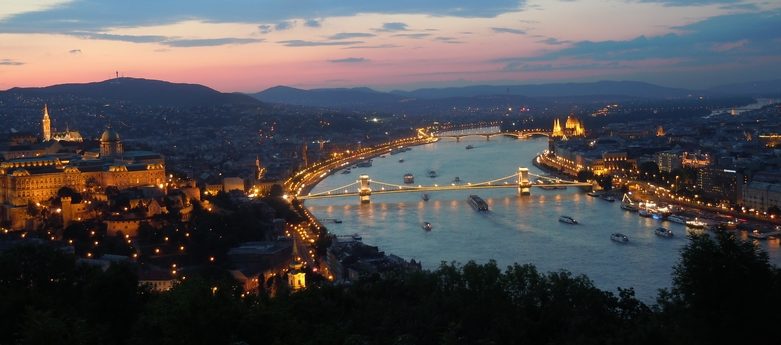I’m sure each city has its own good sides and bad sides. While the good sides we can usually see after a while, the drawbacks aren’t always so obvious in the beginning. Anyway, in this post I would like to highlight the things that make this city great.
The best public transport ever
What I consider the biggest plus for Budapest is the city public transport – the best I’ve ever seen so far. To describe it in one sentence, I don’t remember last time I used a timetable here. I did it perhaps like 2-3 times, but that was definitely in a place very far away from the center and probably very late (or very early) on a Sunday. Really, for traveling throughout the center (and not only there), you don’t need it. I’m not even sure if there are any timetables in some places at all. Well, probably there are, but the reason for not needing them is that most of the means of transport run basically all the time. The only mean of transport on my mind for which you might want to use a timetable is a boat. Yes, in Budapest there is a river so there are also boats. Plenty of boats – both tourist, sightseeing ones as well as public transport ones. If you have a monthly public transport pass, or more likely you buy a one-day or three-day ticket, you can use it for any Budapest urban transportation, including the BKK regular boat lines (called Hájo) or suburban trains (HÉV). So take this as another tip of mine, if you want to see Budapest also from the Danube perspective, you don’t have to pay for overpriced touristic boats. With the whole day (three-day) ticket you can have it for free and you can actually always get on/get off at any stop you want. Just check the schedule to know the exact route of the boat you are gonna take.
Anyway, enough of boats, I’m sure you won’t use them too much. Besides using the water transport, in Budapest you can also typically use the underground transport as well as the overground one. The city now has 4 metro lines and except for night hours, which are namely between approx. 12 am – 4 am., the subways run all the time. The longest time I’ve ever had to wait was I think 9 minutes, which has happened to me like twice, not more, and it was in a very late Saturday or Sunday evening. Normally, during the day metro goes roughly every two minutes, on the weekend maybe every 4-5 min. The Budapest metro is certainly a transportation for which you don’t need a schedule.
Nevertheless the most amazing part of the transportation is that even though the metro is closed during the night hours, probably much like in other cities, there are night buses passing through the center and going further to the suburban parts, covering most of the area of the city as well as the suburb, so you really don’t have to be afraid of not getting home even at night.
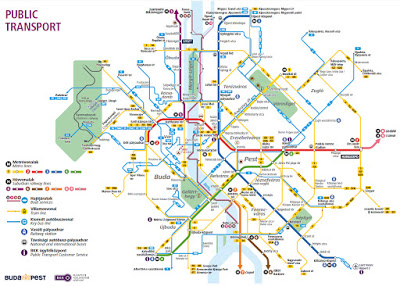
But mainly, there is one more thing you will never need to use a timetable for. The main tram lines (number 4 or 6) – whose routes cross the whole city center and actually connect Buda with Pest and Buda again, also run nonstop and you hardly ever have to wait 5 minutes for one. In fact these trams bear two numbers – 4 and 6, however, unless you live at the end stop of the line(s) it makes no difference for you as both routes differ only in the last stop. Considering, then, that trams 4 and 6 are the same line, imagine that during the day at any time you come to a stop a tram is already coming. Sometimes three in a row. If you are coming home in the middle of the night, you never have to wait more than 10 minutes, which is just awesome!
One funny thing about using the Budapest transportation in conclusion. For whatever you are waiting in Budapest, you expect it, basically any time, to arrive soon and that’s, as a matter of fact, the way you totally get spoiled. For some people living in a village, out of bigger cities, there is no chance they would wait for the next bus less than 15 minutes. Very often, people coming back home at night have difficulties, because sometimes there is just no connection at all. But here, you know, the “pissing off”, bored feeling we – Budapest spoiled townsmen – get when we come to a subway station and on the clock see we have to wait 4-5 minutes for the next one…oh boy!
Budapest has several thermal baths
Hungary is famous for its many thermal baths (fürdő), with the most popular ones Hevíz lake, Hajdúszoboszló or Harkány. Thanks to the hundreds of thermal springs that have been discovered through the country, Hungary is conclusively the land of medical and thermal water and certainly a great place for relaxation and rehabilitation. Imagine that the first spas were already built in the Roman and Turkish era.
In Budapest, you can find 8 official thermal baths, plus some of the hotels sometimes have their own small spas, too. And there are tens of other springs as well, indeed.
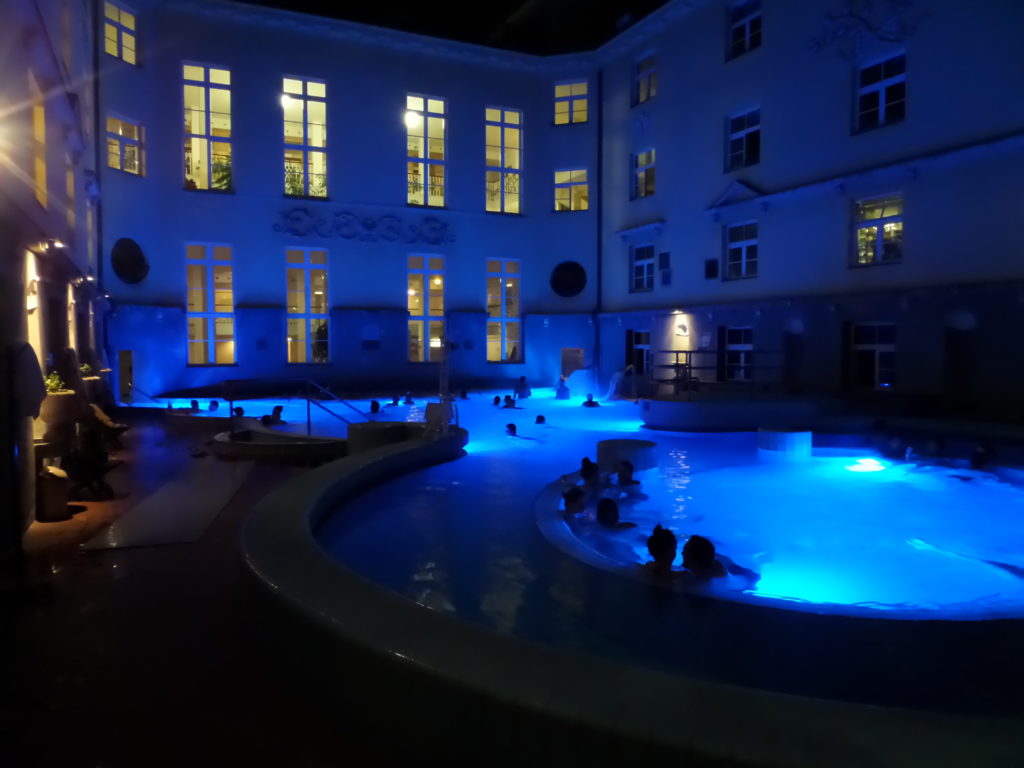
I’ve tried out almost all of them, I’ve only never been to the Kiraly fürdő. I think all of them are cool, all of them have something to offer and therefore are worth visiting. In my opinion, two most popular, and at the same time the most expensive, baths of Budapest are Széchenyi and Gellért. Both are pretty big and can be a good experience, but I personally prefer Gellért, which is, unlike Széchenyi that looks a bit like a sanatorium to me, built and restored in a Turkish style, has many indoor pools of various temperature and a great outdoor place with a Finish sauna and thermal pool, from where you see the Erszébet bridge or the top of the citadel while enjoying a splash about in hot water. Both places are, of course, very touristy and you will hardly ever hear Hungarian there.
I usually choose the golden mean, though. My favorite spa is Lukács fürdő and can absolutely recommend it. I find it really nice, it offers everything you need, but you still pay much less than in case of visiting the two baths mentioned above. Except for usual indoor thermal pools with cold, warm and hot water, Lukács spa also offers one outdoor wellness and two outdoor swimming pools, different kinds of sauna and a newly renovated sauna world.
Dandár baths can be a good option for a relaxing afternoon/evening. Personally I’m not a big fan of this one. Comparing the others it’s pretty small and mostly popular by elder and retired people, but if you go there after 5pm, you get a ticket only for 1100 HUF, which is a good deal if you just feel like bathing for a couple of hours.
Perhaps if you don’t feel like splashing around a whole day in any of the bigger spas, you can get a three-hour ticket to a sort of secret and less known, small Turkish baths called Veli Bej – Csazár fürdő (Caesar baths). The interesting thing about this one is that it is located in the underground and it’s the oldest Budapest spa, built by Ottomans already in the 16th century. The Veli Bej baths has been fully renovated, however, it still keeps the “Turkish era spirit”.
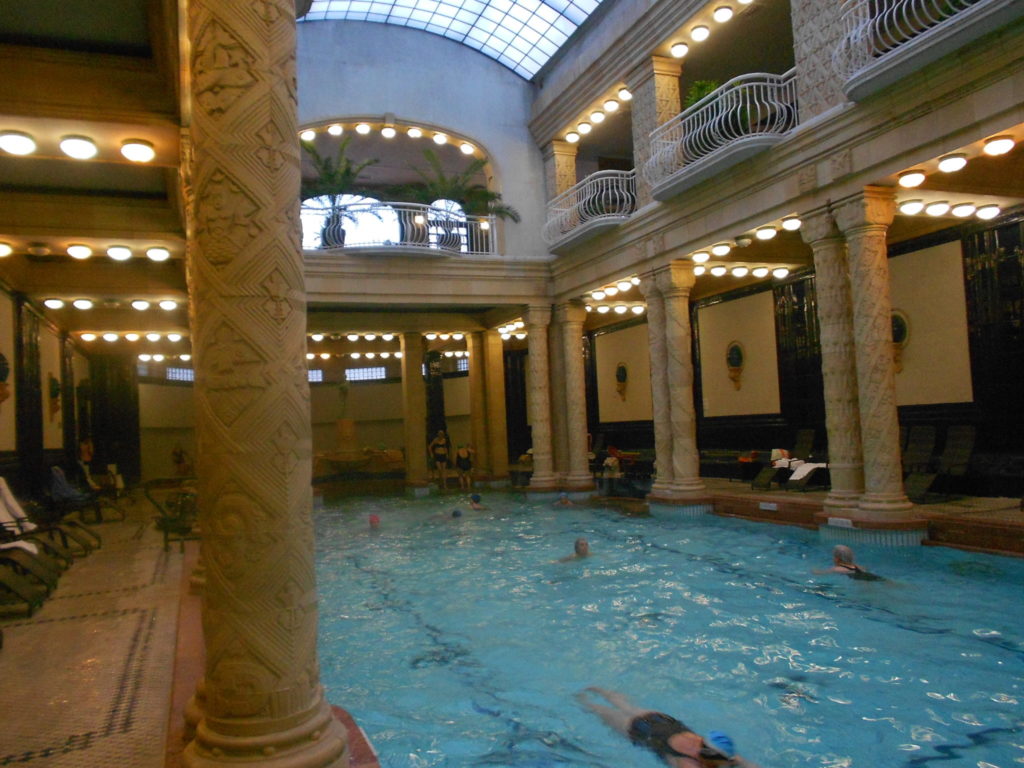
Even though the Lukács baths is my favorite relaxing spot, I have to say that the Gellért baths is still the best Budapest spa. It’s quite expensive and it’s crowded mostly by tourists, but if you are just visiting Budapest for a while and don’t want to miss the spa experience, I say go for this one 🙂
Always something going on
Budapest is a city that is always alive. It hardly ever sleeps. Perhaps the winter time is a bit more quiet and less crowded, with fewer tourists. The rest of the year and especially then summer is really busy, with lots of people everywhere and many things happening.
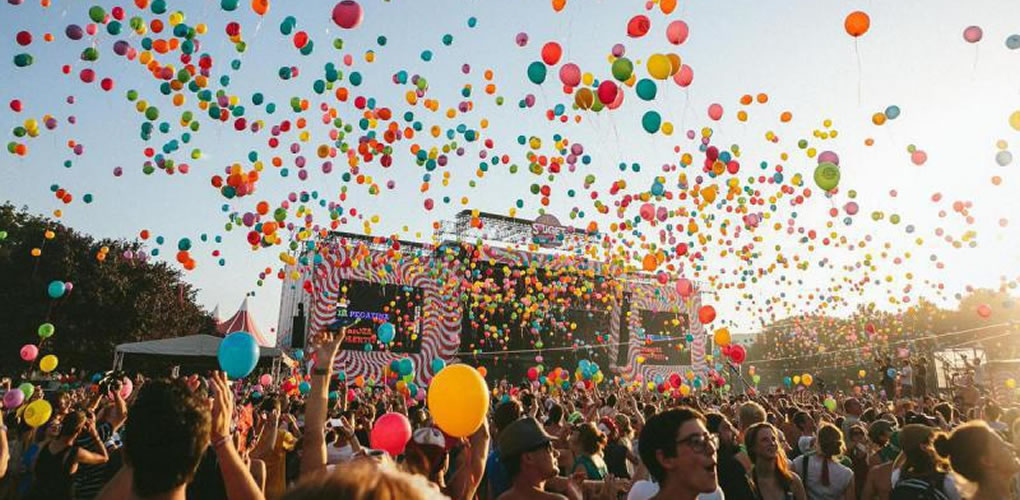
During the warm months Budapest turns into a big festival place. Certainly the most known summer festival that hosts nearly 500,000 visitors every year is Sziget festival, ranking among the biggest European festivals. The Sziget festival is held every year in August on Óbudai-sziget (Old Buda island) and for one whole week becomes the Hungarian cultural and musical center with almost 1,000 performers. In past events you could see here, among others, artists such as David Guetta, Armin van Buuren, Lilly Allen, Calvin Harris, Placebo, Fatboy Slim, The prodigy, Eric Prydz, Chemical Brothers and many many other famous or less famous artists. Please don’t stone me now, but I confess that I never visited the festival O:-)
Speaking about summer festivals, you can also visit events happening out of Budapest – no less famous Balaton Sound or B.My Lake, both held at Balaton lake, or VOLT festival in Sopron.
Budapest is certainly not only a place of music festivals, but also “culturally gastronomic” events. Yes, as you notice quickly when you come to Budapest, Hungarians love food and they do love beer. And they love Czech beer hehe. I mean, seriously, Czech beer is very popular here. A couple of times within a year, there are Czech/Belgian beer festivals and kind of an October fest in Autumn.
Hungary is also “famous” for high consumption of sausages and similar meat products. Believe it or not, even a Pig slaughter and sausage festival has its own place here, if you keen on something….harder ;-). Other regular food & drink festival events are Mangalica, Fish and indeed a couple of wine and Pálinka festivals. In winter, throughout whole December and usually part of November, you can get in the Christmas spirit at the Budapest Christmas markets in Vörösmarty square.
Being the capital city, Budapest is indeed also a great sport place. Besides watching common sports like football or basketball, Hungary are masters in water polo so you can come to see the top national matches to Margit Sziget. After the last successful qualification for the Ice Hockey WC, also ice hockey has recently become quite popular. There are many running events throughout the year. You can participate in marathons, half-marathons or other runs to exercise your bones. Every year in summer, you can watch in Budapest the world’s best pilots at the famous Red Bull Air Race World Championship, or world’s best drivers at Formula 1 Hungarian Grand Prix at the Hungaroring situated just outside the city.
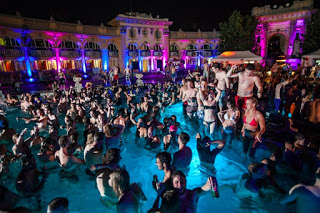
If you wanna experience something untypical, go sparty! Yes, it’s not a typo. You know there are baths in Budapest, but do you also know you can go party in the spa? So called Szecska parties – Spa parties take place at the Széchenyi thermal bath during the summer nights. I can’t tell you my personal experience, because somehow I never managed to go there (perhaps I didn’t even feel like it), but from what I’ve heard it sounds like a cool experience which you don’t want to repeat again, however. You pay 50€ for a ticket, then spend tens of euros for overpriced drinks to party through the night in dirty water with other hundreds of drunk people. But once in a life, you know….
Of course, there are also many museums of various types in Budapest. If you are into history, visit the House of Terror (Teror háza) and I can personally recommend the Hospital in the Rock, which is a Nuclear Bunker Museum (Sziklakórház Atombunker Múzeum) representing a hospital created under the Buda castle in the 1930s. I really liked this one. You can read more here
Last but not least, Budapest isn’t alive only by day, this city doesn’t fall asleep even at night. All around Budapest, well rather Pest than Buda, there are tens of pubs, clubs and beer gardens that particularly in summer burst at the seams, sometimes even on weekdays. To get into the places like Szimpla, FogásHáz, Instant or Dobosz, you sometimes have to wait in the line.
In Budapest, you’ll never get bored, I can guarantee that you will always find something interesting for you.
Cosmopolitan city full of foreigners
As majority of you know, when you come to Hungary, due to the language uniqueness, you probably won’t understand a single word, so you may also wonder how it really feels to be a foreigner in such a country. Well, to tell the truth, if you don’t speak the language, to a certain extent you will indeed be limited, but since the city is very cosmopolitan, with plenty of foreigners, it won’t be such a big issue, though.
But even if you don’t speak the language, you don’t have to worry about getting bored. Thanks to many expats living or studying in Budapest, you can hear English around you everyday. There are lots of events and meetings organized in English happening all the time, where both foreigners and locals gather in order to speak and practice English (or other language), meet people, make fiends or make trips together, for instance. You can use various websites or Facebook groups. You can also simply meet someone at work or just randomly visit one of the plenty bars and easily socialize there.
I came to Hungary just by myself. Well, together with my luggage. I didn’t know anyone and first days was pretty much all alone. This a bit weird and lonely state lasted basically just for a few days and very soon I didn’t feel like I was lost in the city. Personally, I found quickly people to hang out thanks to the Couchsurfing website. I checked out the events, a couple of times joined people for a drink, trip or caving, for example, and eventually stayed in touch with some of them.
I have to tell you that I don’t really have many Hungarian friends, there are only very few with whom I’m in a closer touch. I do have non-Hungarian friends, though. I have a feeling that it may sound strange to you, doesn’t it? I’ve lived in Hungary but don’t have many Hungarian friends? Well, I think this is pretty similar for most of expats. The thing is that as an expat you live a different life from the life locals usually live. You move in to the city to experience something new, to meet and get to know new people, gain new experiences and just enjoy your life. Therefore, you get more excited about the city, discovering new places and trying new things and tend to meet people similarly minded. You go to similar places, you gather in similar events and make friends with international friends of your international friends 🙂
You my disagree with me, but I think being a local feels a bit different. What I’ve noticed is that as a local you usually sort of have your own life, you have lived in the city for a couple of years so there is not much new for you, you have your own long-term friends, hobbies, job, goals and a routine. It definitely doesn’t mean that you don’t do it, you just don’t tend to meet foreigners so much, or so often.
The second reason for having many more foreign friends, and I surely don’t mean to insult anyone, I don’t find Hungarians the easiest people to make friends with….
I don’t want to judge whether it’s good or not, not to have many local friends. Locals can certainly help you to explore the city deeper and from a different angle, can give you many useful tips on places, food, events or habits. And they are also very useful when it comes to the language barrier. However, there is for sure also one bad aspect. If you are in the same situation as me, meaning you know rather foreigners than locals, you might be forced to constantly look for new friends as lots of people just come and leave. Budapest is a cool place, but for most of such people it’s just a stopover. As soon as they know the city so well that there is nothing new, get stuck or finish the project they came to work on, they leave for another destination. Even though it’s nowadays a bit easier to stay in touch and see thanks to the Internet, cheap flights and other possibilities we have, saying goodbye, ehm…saying see you around the world to someone who has just become your good friend isn’t easy….
The weather
Although Hungary is not located too far from my country – the Czech Republic – and, much like whole Europe, lies in the temperate zone, I wouldn’t expect a big difference in the climate between both countries. The true is that there isn’t a too big difference, but there still is some.
Hungary is a landlocked country without access to the sea, has a continental climate, but is situated rather south of Europe and, unlike the Czech Republic, doesn’t have high mountains, which may be one of the reasons (I’m not a climatologist) why this country is actually warmer.
Of course, it depends on the season, but summers are ordinarily pretty warm and winters pretty mild with very little or no snow. I personally don’t like winter and I’m then a bigger fan of summer and warm weather. I like winter snow in the mountains, perhaps also for a while on Christmas days, which actually makes Christmas feel like Christmas, but other than that I prefer winter temperatures when I don’t have to take on a beanie and huge winter shoes. On the other hand, although I love summers, I don’t need to have them with extreme heat as it happened last year*
Anyway, generally speaking Hungarian weather is a golden mean. You can have sometimes some snow in the Buda hills but in the city there is hardly any. Summers are usually hot but, as it’s typical in these parts of Europe, don’t last too long. Even though autumn is quite rainy, I would say in general it doesn’t rain so much in Hungary (definitely less than in my country and incomparably less than in Belgium or the Netherlands, hehe 🙂 ), which is a great thing and particularly in spring you can enjoy a nice weather.
*a small update – that was in 2013, summer in 2015 was probably even worse. One of the many, really hot, summer days I was at the swimming pool and the thermometer outside was showing 41°C (in the shade). It was 6pm. Yes, 6 in the evening. There were nights when the temprature didn’t drop below 25°C.
Markets with lots of fresh fruits and stuff
Although the quality of Hungarian food (I wrote a whole post about Hungarian food ), not to mention Hungarian cuisine, is pretty bad (apologies to all Hungarians, but it really is 😛 ), there is still one good thing, too. All over the city, there are plenty of markets, whether bigger or smaller, where you can get a lot of fresh stuff. Except for the famous Nagy Vásárcsarnok, being one of the touristic sights to be found in every guide, where everybody has been or will be at least once for sure, you can also find many other non-touristy places. There are a few other official big markets in Budapest, but it’s not necessary to go to them.
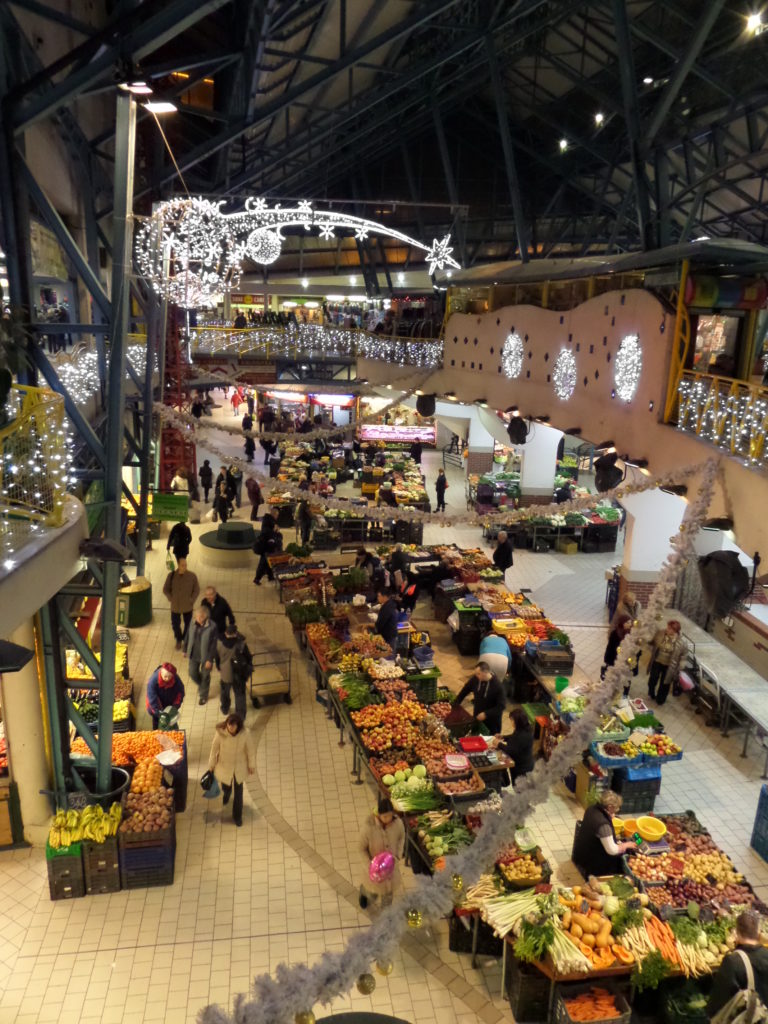
The one I know about, like and prefer to the touristy one, is Lehel Csarnok at the Lehel square. Well, you find hardly any souvenirs here, but then there is a variety of stuff you actually go for, such as all possible kinds of fruits, vegetables, a couple of butchers, milkmen, bakers and stalls with other miscellaneous homemade products. Another one is near Újbuda-központ, behind the Alee shopping mall.
You don’t always have to go for fresh fruit and vegetables to the big traditional markets, however. Besides these, there are many farmers having their small stalls around Budapest.
Anyway, getting back to the point, the nicest thing about fruits and vegetables in Hungary is the vast variety of fruits in summer. Obviously it’s not as good in winter, of course, because some fruits simply don’t grow on this land, but thanks to the quite warm weather and good natural and agricultural land conditions, as soon as the early summer comes the selection of fresh fruits is pretty big here. Typically you can get fresh apricots, peaches, plums, whatever kinds of berries, apples, pears, melons and lots more.
Lots of nice parks and green areas
Living in a big city full of people, cars and the accompanying pollution is, without a doubt, not the healthiest way of life and it’s not always easy to find a piece of nature among the concrete jungle. I think in Budapest they don’t completely forget about the importance of having green areas to keep the city at least a bit cleaner, to have a place to relax, or possibly do some sport.
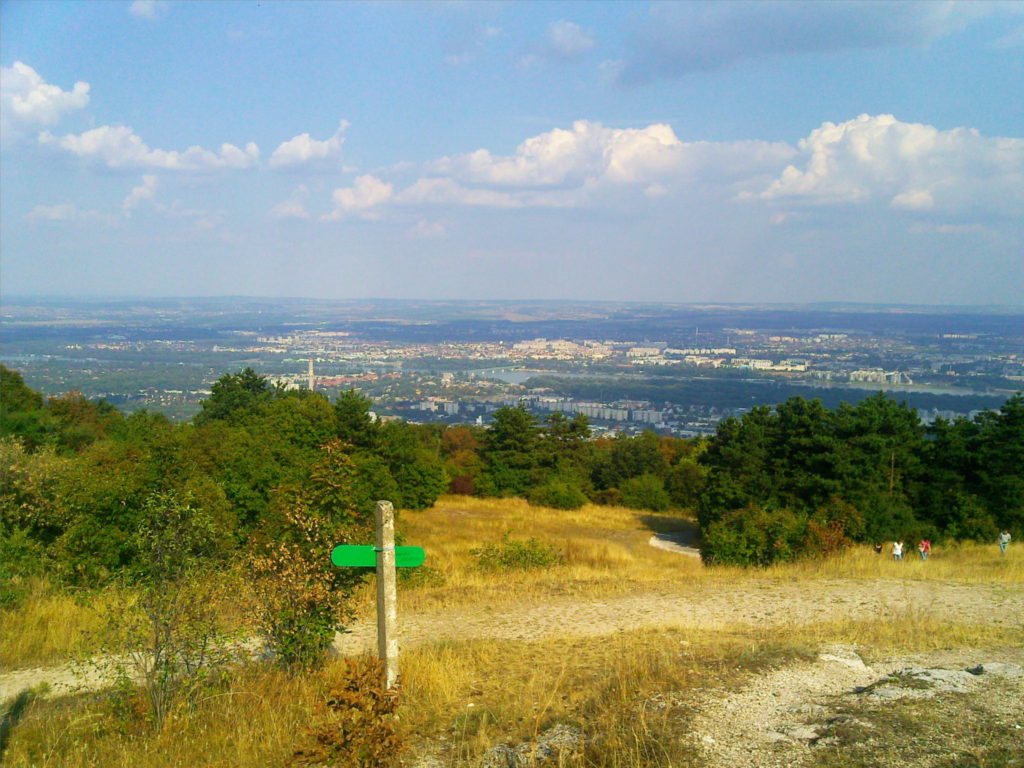
Above all, I would like to tell you that if you kind of get tired of the city and all the dust, traffic and rush around, and start feeling like getting out to nature to refresh your mind, Budapest has a great place for everyone to do so. Basically the whole west – Buda – side of the city is pretty green, mainly thanks to the Buda hills covering most of this area. There are many nice places you can visit in the Buda hills and surroundings, such as the most popular Normafa, János Hegy with the Elizabeth lookout tower (Erzsébet-kilátó), Hármashatárhegy or other lookout towers. You can get more inspiration for hikes at “A Couple Of Tips For Budapest Visitors“.
Coming back to parks as such, the biggest and at the same time the most popular one, you can find right in between Buda and Pest, which means on the Danube. Yes, right there you can find the biggest Budapest island – Margit sziget (Margaret island), which presents one huge park, in fact. Margit sziget is also the most popular running place and sport & relax center in general, with a swimming pool, football pitch, water polo pool, play fountain, a club and even a mini Zoo. You can read more about Margit sziget here.
Looking apart from the island, officially the biggest Budapest park is Város liget (city park) close to the Hero’s square (Hősök tere). The place I like very much and can absolutely recommend is called Kopászi gát (Bald dam), which is apparently an artificial dam. Having written about these places under post
“A couple of tips for Budapest visitors“, hereby I would like to encourage you to check and read more there.
A bit out of the center, but nearby my apartment, right behind the Hungarian Natural History Museum, there is a bit smaller but very lovely Orczy park. Also here you can see a lot of people from the neighborhood (sometimes even me) jogging. In the middle of the park, there is a big meadow, a perfect spot for relaxing on warm days or performing various types of games. You can walk around, sit by a duck lake or try out being Tarzan in a small adventure park for a while. One proper and one artificial football pitch can also be found in the park, however, a part of the park is already under reconstruction that is supposed to include the whole park in 2016.
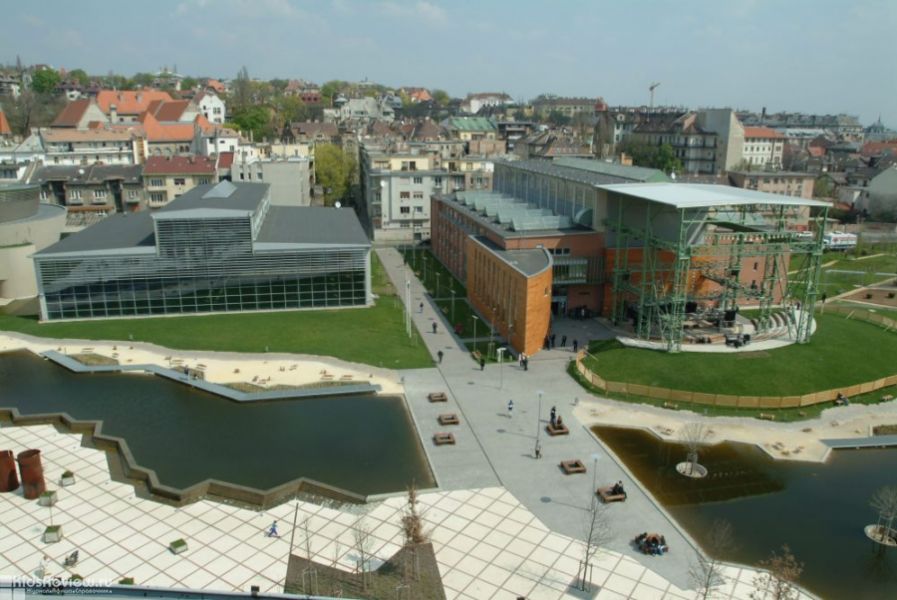
On the Buda side, there is an interesting park called Millenáris, which can be found behind the Mammut shopping mall. The park is located on the territory of the former industrial site and has fully been reconstructed a few years ago. Nowadays, it serves as a recreation center with a pond, cafes, playground and a couple of exhibition halls (The Invisible Exhibition can also be visited here). It’s also a popular venue for concerts and various exhibitions or fairs.
You can also spend your time in Városmajor, Vérmező or in the south (11th district) a bit forgotten, nameless, but lovely park (near Kosztolányi Dezső square) with a lake (the lake is called Feneketlen).
I’ve tried to gather perhaps the most interesting parks that can be found in Budapest. Besides those, there indeed many small parks spread throughout the city. Very often they have a ping-pong table, various working out stuff or children’s playground. But find your time to explore the city by yourself. Or play Geocaching 😉
Junction of the low budget airlines
In my very first post I told you that one of the reasons I decided to come to Budapest was that I was missing traveling. Believe it or not, although Hungary is not a big country, it has borders with 7 other countries so just by visiting its neighbors you can easily add 7 new counties to your “I’ve been to” travel map.
You can do it, of course. And you can also travel throughout Hungary as well. What I especially want to mention here, however, is that Budapest is also a perfect spot for traveling to distant countries because the Budapest airport is a base for all the low budget airlines. Therefore, from here you can get to more than 30 destinations for a reasonable price, by flying with Wizzair, Ryanair or Easyjet. Moreover, although the airports of most of the low budget airlines are sometimes located quite far out of the actual city, the Budapest one is pretty close to the city so it’s quite cheap and fast to get there.
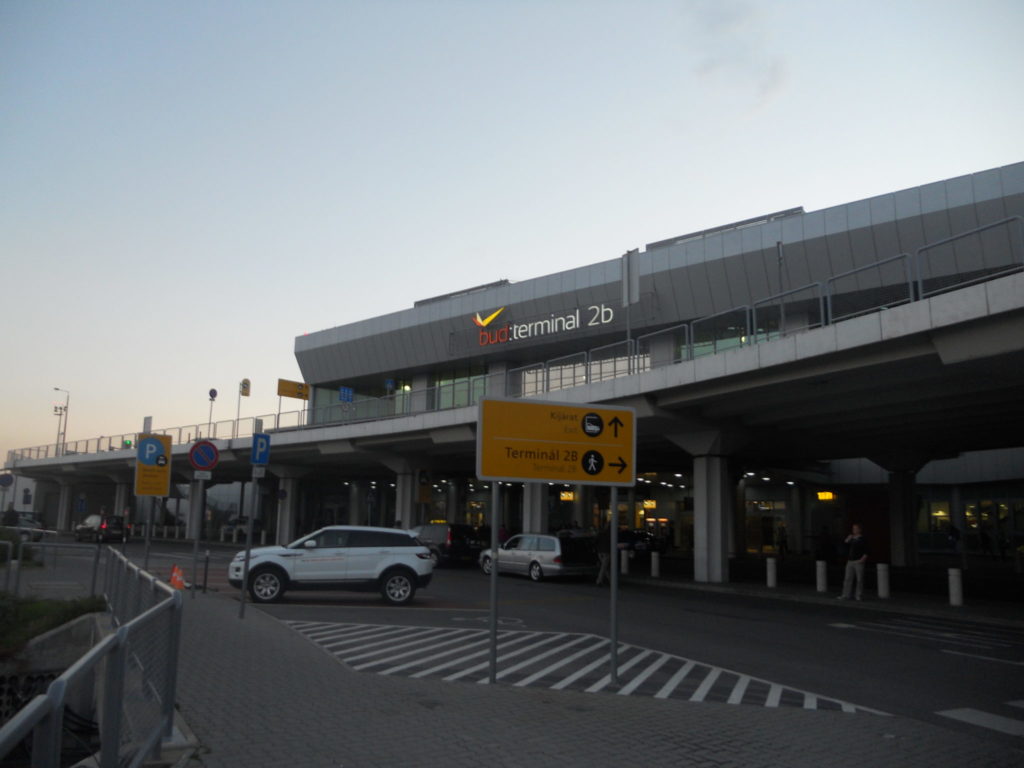
If you are lucky, book your tickets in advance and, perhaps use a club card, you can sometimes travel for an incredible price. Out of many places I’ve visited from Budapest, as an example, I got a return ticket to Targu Mures in Romania for 7.000 HUF, Rome for 8.000 HUF or Istanbul for 21.000 HUF.
Little advice, in conclusion. When you arrive at the Budapest airport, don’t be such a lazy, comfortable tourist. Sure, the easiest way to get to the city is to grab a taxi. It will cost you around 22 € and take about 35-45 min depending on the place you want to be dropped off at. You can also use a shuttle bus (I don’t know much about those but the price should be lower). Or you can play being a local, which is always the cheapest, and get on a public transport bus 200E with a transfer ticket for 530 HUF (less than 2€), whereas it will take you around 40-45 min with one change for metro M3.

